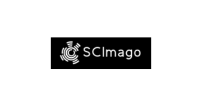Impact of Perch Usage on Broiler Welfare
DOI:
https://doi.org/10.5380/avs.v11i3.7422Keywords:
aves, comportamento, Cinco Liberdades, poultry, behaviour, Five FreedomsAbstract
Industrial broiler production presents important challenges to the welfare of the birds. The objective of this work was to increase broiler welfare through the inclusion of perches and the evaluation of their impact on the welfare of the animals. Three hundred and sixty male birds were raised from day 1to 42 in two treatments, with six boxes per treatment and 30 birds per box, being T1 – boxes with no perch and T2 – boxes with three perches each. Behavioural observations were organized as instantaneous scan sampling. Forty dayold birds were subjected to physical clinical exam to register chest feather condition and leg health. Ration
consumption, weight gain, slaughter weight and feed conversion were monitored. The frequency of perching events was higher as birds grew older, being 0.3%, 2.6% e 5.1% for the fourth, fifth and sixth weeks, respectively. During the last two weeks of life, frequency of floor pecking events was higher and of agonistic interactions was lower for broilers maintained with perches (P<0.05). Results for the effect of treatments on chest feather
conditions and on leg problems were inconclusive. In general, there was no treatment effect on production indexes (P>0.05). In the experimental conditions, we conclude that the presence of perches results in improvements of the Behavioural Freedom for the last third of the bird’s life. More research is needed regarding
the perch effects on broiler’s Sanitary Freedom. Results suggest improvement of broiler welfare due to the presence of perches.
Downloads
How to Cite
Issue
Section
License
Authors that wish to publish in AVS agree with the following conditions:
- To keep copyright of the article and allow the AVS to publish the first time. The article will be licensed by Creative Commons - Atribuição 4.0 Internacional allowing the sharing of their work.
- Authors may distribute their work by other channel of distribution (ex.: local or public repository).
- Authors have the permission to publish their work online, using different channels (similar to above), even before the final editorial process.













